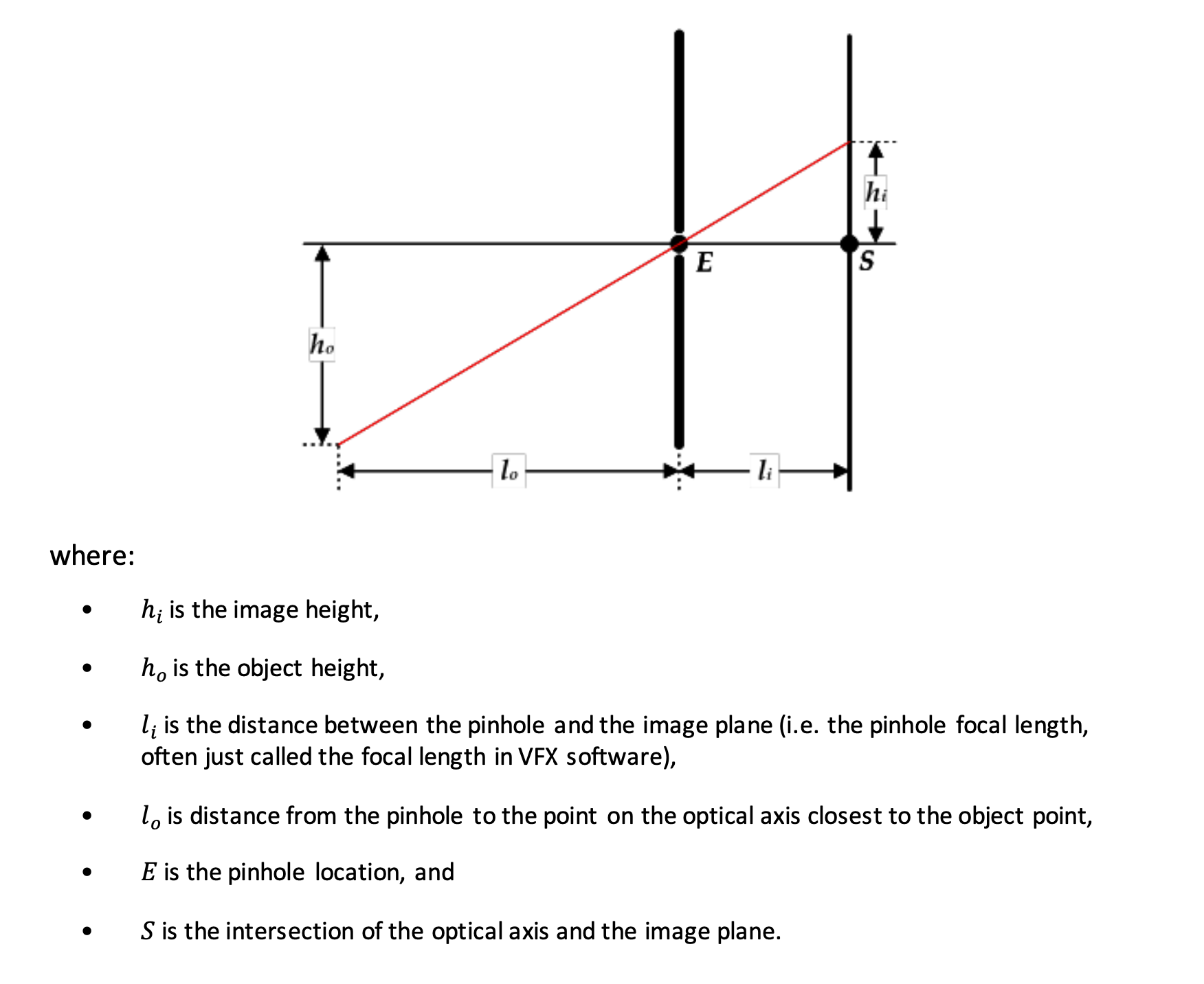...
- depth (how far away from pinhole camera this plane should exist in space)
- alpha gain or other "image attributes"
- more attributes to fine tune fit
Pinhole Camera Diagram
This proposal will follow the same nomenclature from the Cooke site. Here is a reproduced CG Camera diagram. (from https://cookeoptics.com/i-technology/ > "Cooke Camera Lens Definitions for VFX" > CG Camera diagram 2.1.)
UsdGeomImagePlaneAPI Schema
...
- asset image = @@
- Path to image file
- can be time sampled per frame
- This will have to be per frame, as USD/Hydra do not at this time support a
$Fsubstitution for image/texture asset paths.
- Path to image file
- double depth = 0
- distance, in scene units, from the pinhole to the point on the optical axis where the image plane sits
lo in CG Camera diagram 2.1 in https://cookeoptics.com/i-technology/ > "Cooke Camera Lens Definitions for VFX"above pinhole camera diagram
- alternative name: "distance" (Autodesk Maya used "depth")
- A nice default could be -1 or "infinite" so that it would always be behind CG. That might be hard to coexist with a physically placed in scene camera depth that exists in front of and behind cg elements.
- distance, in scene units, from the pinhole to the point on the optical axis where the image plane sits
- uniform token fit = "vertical"
- How the image plane is fit to the filmback. Possible values:
- "horizontal" - fit image width to filmback and keep image aspect ratio
- "vertical"- fit image height to filmback and keep image aspect ratio
- "best" - from Maya, but maybe this behavior is too ambiguous
- "fill" - stretched to filmback
- "to size" - constant size, centered on filmback, and requiring more data to define "image size"
- How the image plane is fit to the filmback. Possible values:
- float[2] offset
- in same units as camera filmback - tenth of scene unit
- bool enabled
- Control image plane visibility.
- alternate name: "visible"
- regardless of this value, if the (camera) prim itself is invisible, the image plane will not be visible in the viewport/render
- Control image plane visibility.
Why a Multi-Apply API Schema?
If we implement a Multi-Apply API Schema for Image Planes we can:
- author attributes directly to camera
- author multiple image planes to camera, since multi-apply schemas can be applied several times to the same prim
- This multiple image planes could be used to view CG elements in context with foreground or and background plates.
API Methods
TODO:
- CreateImagePlane(imagePlaneName)
- SetImagePlane*Attr(imagePlaneName, value)
- GetImagePlane*Attr(imagePlaneName, attribute)
- SetImagePlanes([])
- GetImagePlanes()
...
- Requires relationships between camera + plane prims
- Requires an extra API schema to encode the relationship on the Camera.
- There's the possibility that someone targets something other than an ImagePlane with the relationship, so there are more ways to "get stuff wrong".
...
